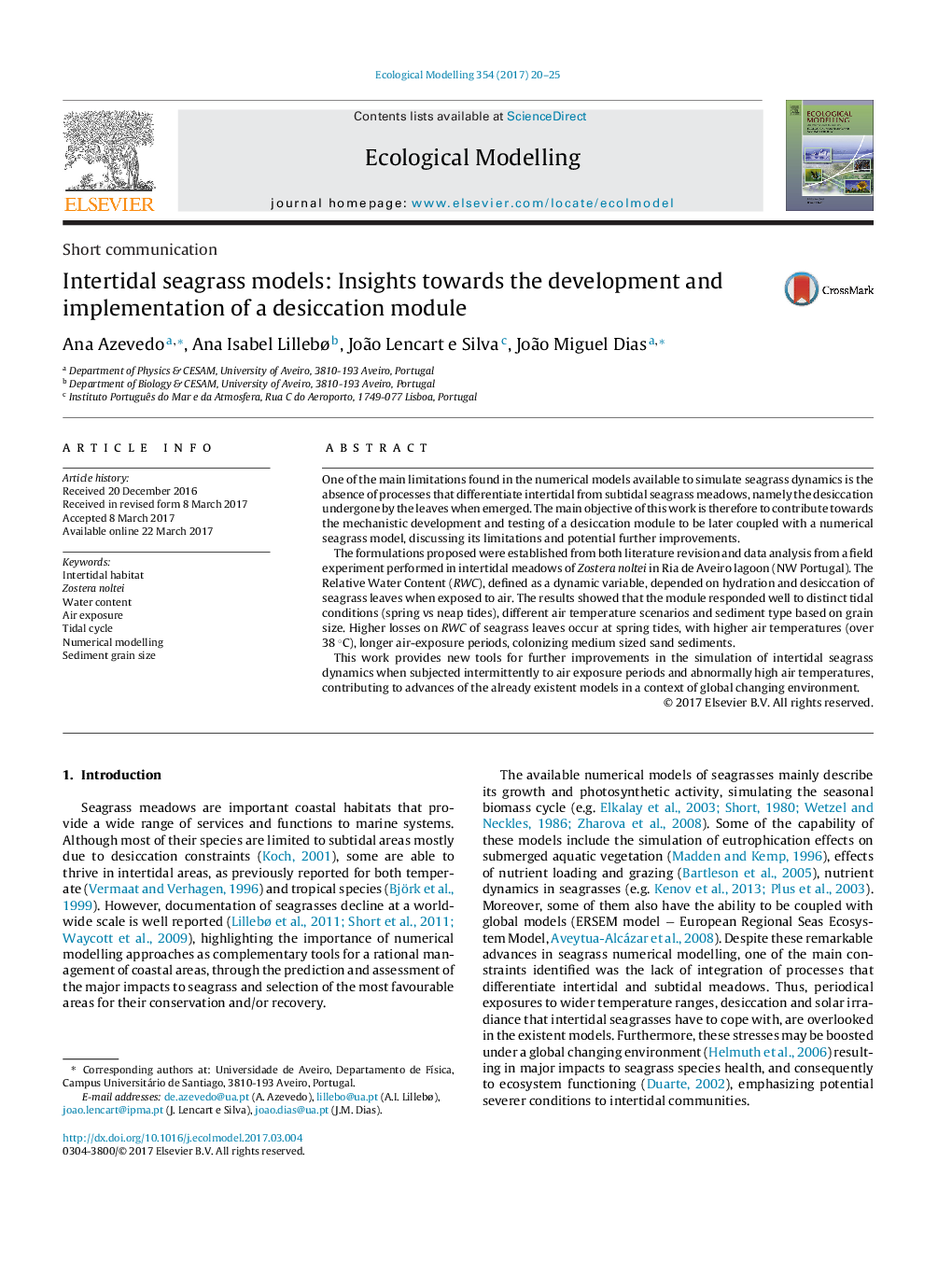| Article ID | Journal | Published Year | Pages | File Type |
|---|---|---|---|---|
| 5742183 | Ecological Modelling | 2017 | 6 Pages |
â¢A mechanistic development of an intertidal seagrass desiccation model is proposed.â¢Formulae is based on Relative Water Content of Seagrass Leaves content.â¢Higher Relative Water Content losses registered at high air temperatures at spring low tides in medium sized sand sediments.
One of the main limitations found in the numerical models available to simulate seagrass dynamics is the absence of processes that differentiate intertidal from subtidal seagrass meadows, namely the desiccation undergone by the leaves when emerged. The main objective of this work is therefore to contribute towards the mechanistic development and testing of a desiccation module to be later coupled with a numerical seagrass model, discussing its limitations and potential further improvements.The formulations proposed were established from both literature revision and data analysis from a field experiment performed in intertidal meadows of Zostera noltei in Ria de Aveiro lagoon (NW Portugal). The Relative Water Content (RWC), defined as a dynamic variable, depended on hydration and desiccation of seagrass leaves when exposed to air. The results showed that the module responded well to distinct tidal conditions (spring vs neap tides), different air temperature scenarios and sediment type based on grain size. Higher losses on RWC of seagrass leaves occur at spring tides, with higher air temperatures (over 38 °C), longer air-exposure periods, colonizing medium sized sand sediments.This work provides new tools for further improvements in the simulation of intertidal seagrass dynamics when subjected intermittently to air exposure periods and abnormally high air temperatures, contributing to advances of the already existent models in a context of global changing environment.
